categories
FIVE INDOOR ACTIVITIES FOR STUDYING TREES
Throughout the month of March 2021, we will be focusing our studies on the Trees Field Guide and hope that you’ll join us. Tag us in your activities through the month and use the hashtag #TLOLTrees
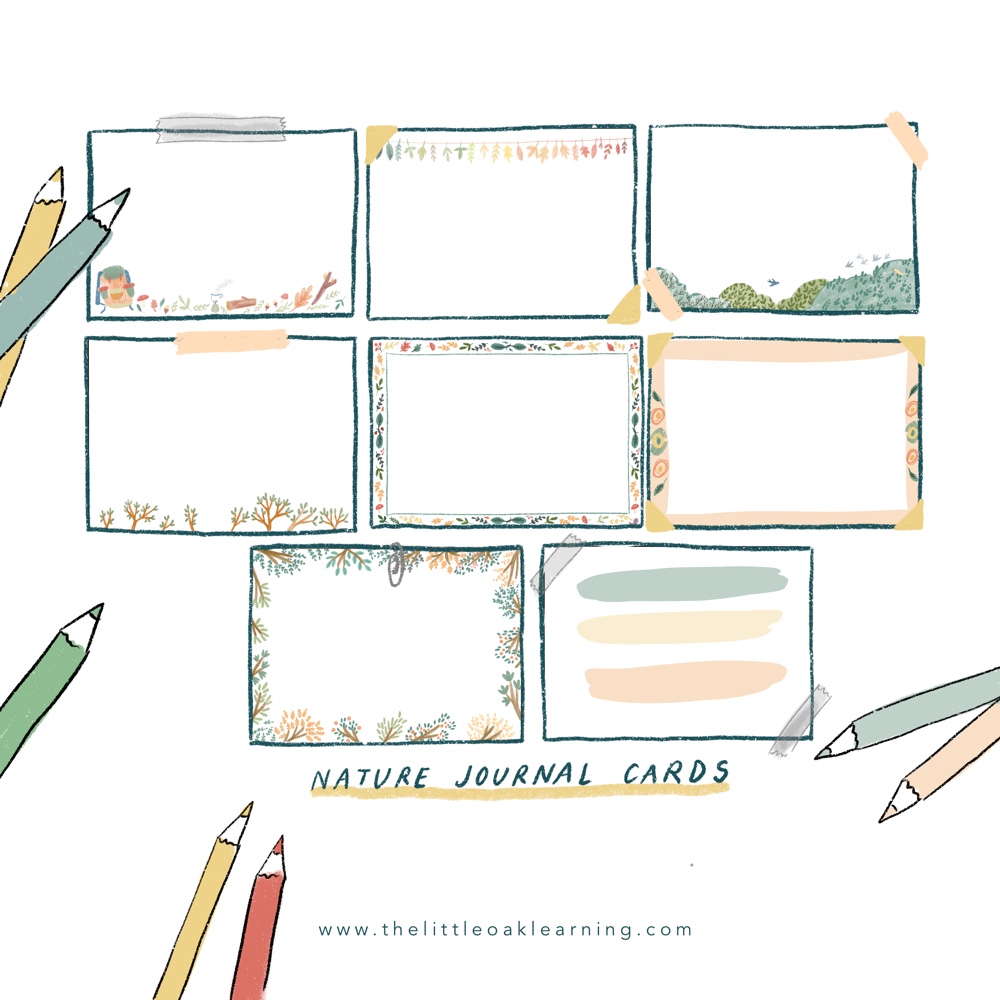
Nature Journal
The nature journal cards in our Field Guide to Trees are designed to be used as part of a collaborative nature journal. You can take the cards with you and jot down notes, sketches, questions, sightings and the like. Without the pressure of a clean looking sketchbook page, you can put ideas and sketched onto the little cards. These notes and sketches don’t need to be perfect. Of course your child will be excited about being outside and likely want to explore and play and experience the environment. The cards are a quick and simple way of capturing ideas which you can come back to later. When you get home stick them in your family nature journal, leaving spaces to add answers, further findings, or more detailed writings and drawings.
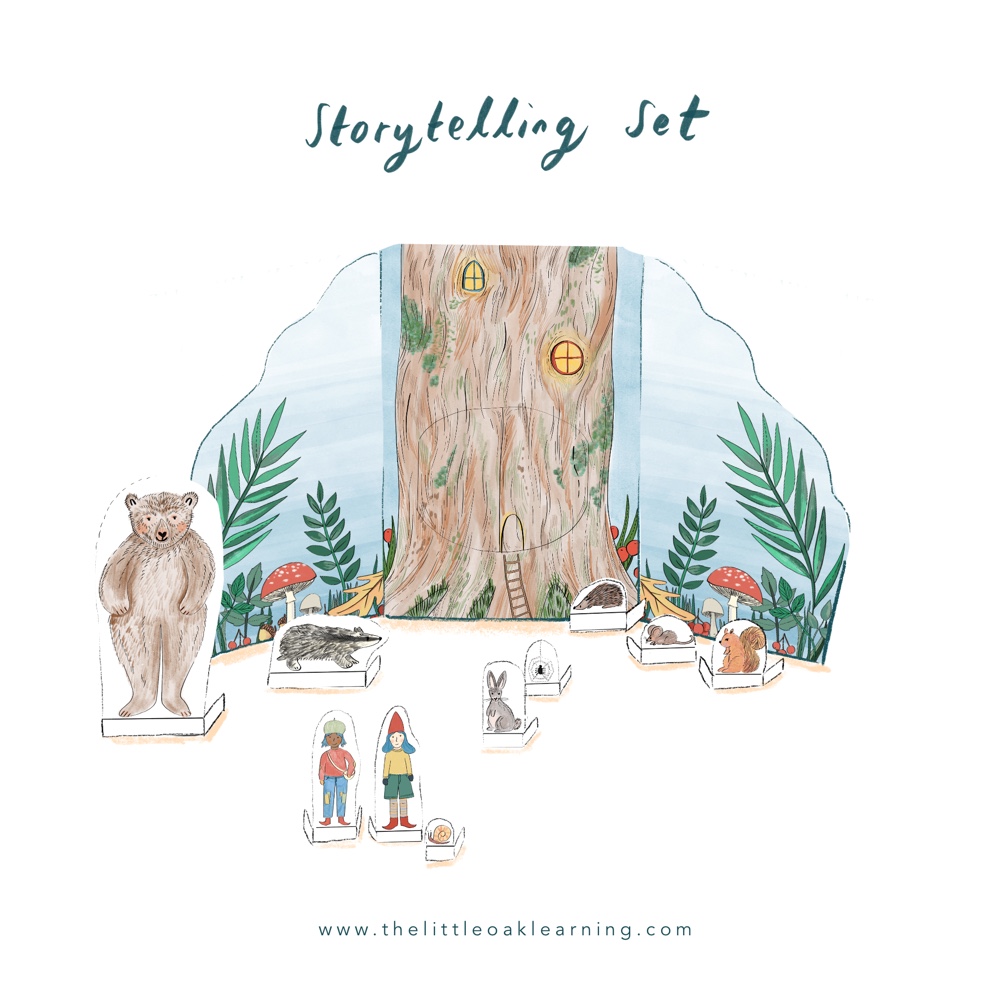
Setting up your Storytelling Set
Inside Field Guide to Trees we have a tree scene, with fold out doors and matching characters. You can set up the storytelling scene and add some little props to encourage imaginative play and storytelling. Perhaps you have some little dolls house furniture which may be suitable. You could also add a realistic ‘ground’ to set the scene- lay out a piece of natural coloured fabric and adorn with pebbles, leaves, pine cones, twigs and bark.
If you don’t have the field guide and the storytelling set, don’t let that stop you from creating a story space in your home. Use a tray or shelf to set up a little scene, like a small world scene. Create ‘trees’ by sticking little leafed branches into lumps of playdough, or add braches to a vase. Lay the ground similarly to above, using natural materials to set the scene. You can also gather together some figures, or draw and make your own, to act as the characters in your stories.
You can also write some story prompts on cards. Here’s a few to get you started…
- It was chilly day in the woodland…
- These woods were different, they were magical…
- Nobody knew where the magic tree was but today was the day they were going to find out…
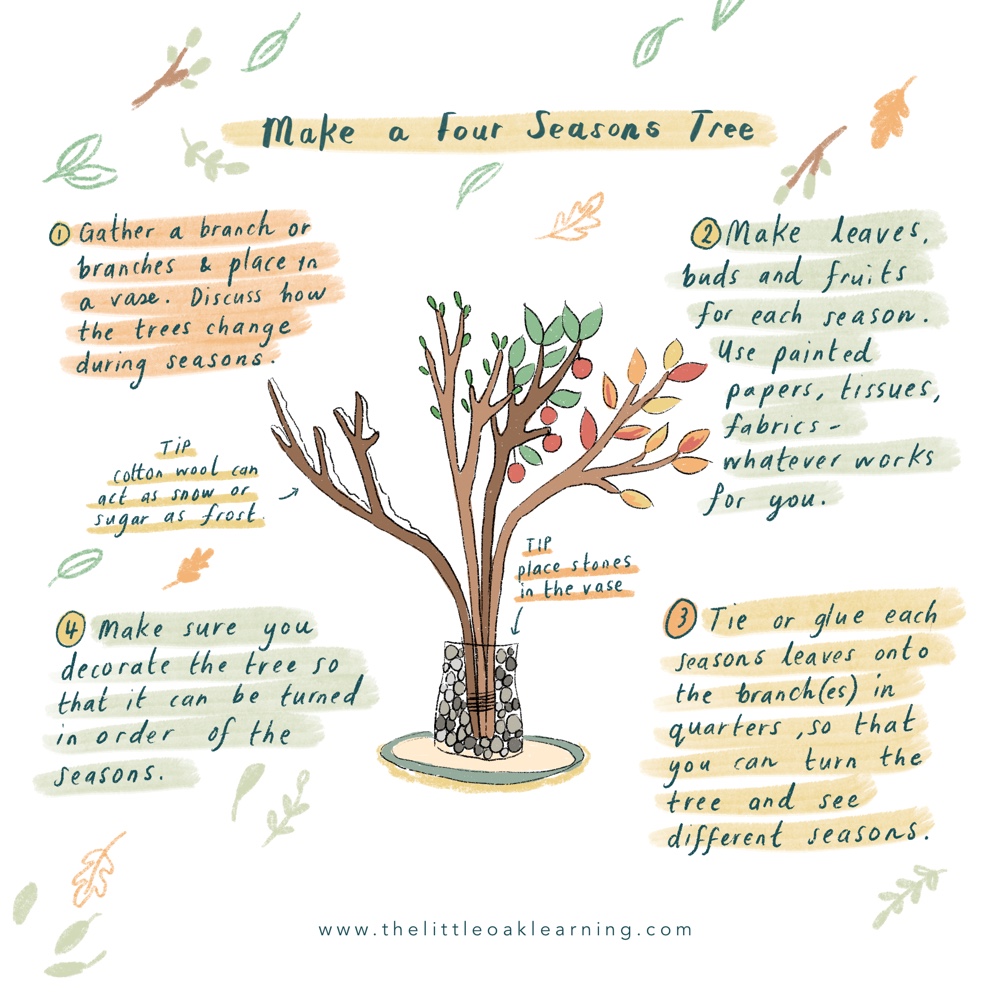
Make a Four Seasons Tree
This is a simple craft to explore the idea of trees changing through the seasons. On a nature walk, keep a look out for a suitable, full branch. You either want a branch which has lots of small branches coming off it, or gather together a number of branches so that you can tie them together at the bottom. Place your branch(es) in a vase. Tip: if your vase is too big and the branch is lopsided you can fill the vase with pebbles to secure the branch in a standing position.
Now you can make different coloured leaves for the seasons. Discuss with your children how they think the tree will look in the different seasons. Perhaps in winter it won’t have any leaves, just a bit of snow or frost. Perhaps in spring it will have small green shoots, in summer it might have full bright leaves and some fruit, and perhaps in autumn it has bright coloured orange and red leaves. After discussing how the tree will look during different seasons, begin to gather and make your tree’s leaves and fruit. You could so this with paper and paints, painted leaves and fruit made from salt dough.
Once you have a small collection for each season you can decorate your tree. Imagine that your tree is split into four quarters, so that as you turn it you see the different seasons represented. Tie or glue the small green leaves on to one quarter for spring, the bigger leaves and fruit on the next quarter for summer, and so on.
Now you will have a beautiful model of a tree that can be turned and seasons discussed, helping your child to understand the cyclical nature of seasons and the life of trees.
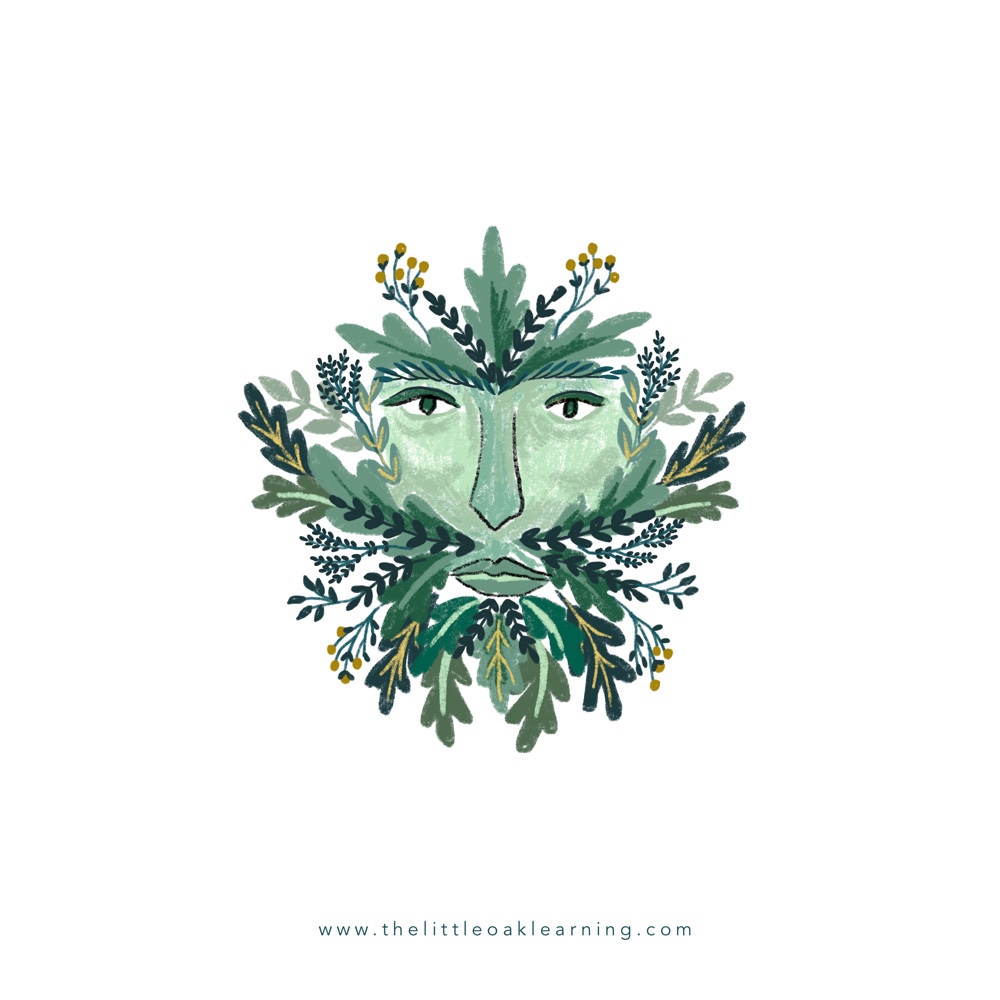
Learning Folklore of Trees
Tree and plants have a great amount of folk knowledge attached to them. In the past trees played an important role in the life of people. Some trees spiritually represented certain things, such as death, fertility, life and so specific species were planted in certain places within villages. The trees also had many different uses and different wood was chosen for different tasks such as boats, tools and homebuilding. Trees also had many medicinal uses and bark, leaves, fruits etc would be collected and used by folk to support their health. Folk lore is regional and there will be different folklore connected to the trees in your region and your heritage. Perhaps you will be able to learn about the history of your area and how people historically were in relationship with trees. Trees are still a deeply important part of life on earth, perhaps you can use some of the folk knowledge that you learn and incorporate it into your present day life.
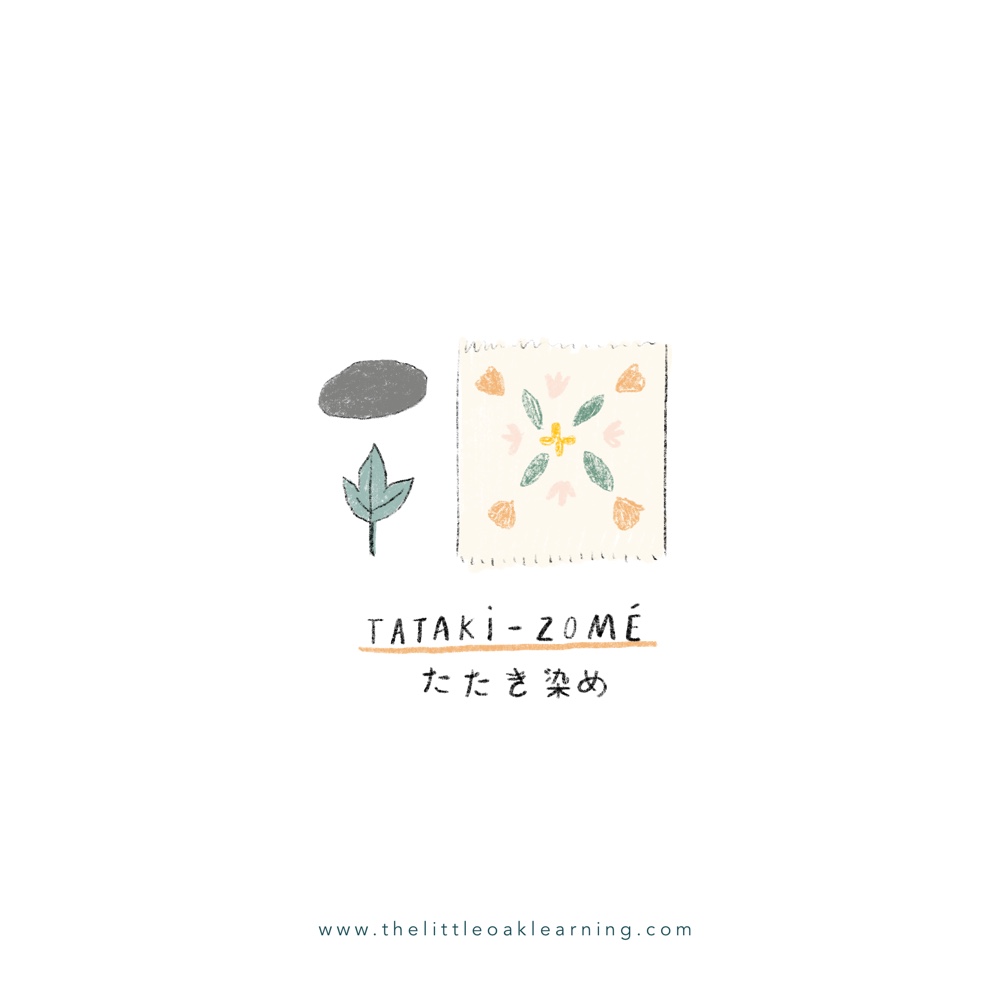
Tataki Zome
The Japanese art of tataki zome involves pounding leaves onto paper or fabric to create prints. There are many tutorials online. The general technique is to choose leaves and flowers which contain pigment, so this works well with fresh leaves, rather than the oranges and reds of autumn leaves. Place your leaf under a piece of paper or fabric and use a stone to gently hammer the entire area of the leaf. You should begin to see the pigment showing through your fabric. You can also gently and carefully peel back the fabric to see if it is working. As you get the hang of the technique you can create patterns with different shaped leaves and flowers.
CATEGORY
3/01/2021
COMMENT LOVE